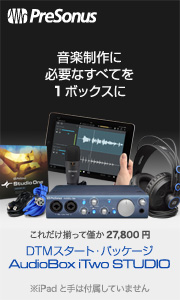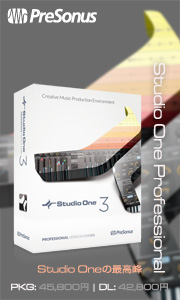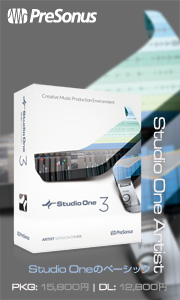
—— Why did you use the API EQs ?
With jazz recordings like “Kemono,” the sound should be close to perfect at the time of the recording. Live piano recordings always peak at some point, so I need to cut those frequencies. I also cut the mid-range of the hall. 550 is a 3 band EQ, but if there was one more, I’m sure I’d find more things to adjust. The basic system I use is usually increasing the highs, cutting the frequencies that tend to get stiff (I think it was about 3kHz), and I usually also bring up the low a tiny bit. That’s how I tweaked the sound.

—— How did you monitor the recording ?
I made a rough mix on Pro Tools and I monitored it through FireStudio’s headphone out. So there was obviously a bit of latency there, but I wasn’t performing so it wasn’t a big deal. FireStudio also has a different set of outputs, so I connected a KORG MR-2 and did a rough mix for the musicians. This extra set of output really comes in handy as a backup as well.
Kemono – “The moon and her” at Ogikubo Velvet Sun
Recording by a field recorder
Kemono – “The moon and her” at Ogikubo Velvet Sun
Recording by PreSonus mobile recording system
 Kemono Kemono
Formed in June, 2010. Kemono is a project started by AME, through the theme of expressing human instincts with sound. They perform original and jazz. In May 25, 2011, the first album “Kemono no Uta” was released. Kemono has many upcoming shows with support members Mamoru Ishida on the piano, Ryoji Orihara on the fretless bass, and Yuto Maseki on the drums.
Official website: kemonoz.com
|
 |

—— I heard you did a live recording for Natsuko Kondo at the Club Quattro September 29 concert.
I’ve known Natsuko through recordings and mixes for her singles, so that’s how I got the job offer. I didn’t want the distinct HA sound from the PA mixer, so I asked the cable to be split and recorded them in 24 channels. The setup was drums, bass, guitar, piano and vocals. I also had an extra 4 channels of percussion from HA. With Natsuko, I didn’t EQ during the recording, since she’s a pop singer, but trying to get a solid sound through the HA was tough.
—— How do you feel about PreSonus mobile recording system after you actually used them ?
It works seamlessly, and I will be repeating myself, but I really appreciate how compact it is – a 24-channel audio interface with XMAX microphone preamplifier built-in for all channels, fitting in to a surprising 3U rack mount! Thinking back to the Tulip recording I did with Pro Tools|24 Mix, 10 years ago, the size of the system is genuinely surprising. A Power Mac 9600 with several 888|24 I/Os along with a huge hard drive now shrunk to a small MacBook Pro and just 3U rack gear. It is amazing how much technology can advance in such short period of time.

—— Are you planning on continuing your work with live recordings ?
Yes, I think so. With a compact live recording system like this, I think production itself will start to change from now on. Before, you would decide to make a CD, set a budget, then the recording session would happen in usually a tight schedule. But now, with systems like these, nothing it set, but you can still think “why won’t we record it, just in case?” And you can always take it to post-production if the performance was great. Some of you who have experienced recording before may know, but being in the studio, and being told “You’ll be recorded now,” is somewhat odd and sometimes doesn’t result in great music performances. Of course, on the other hand, this kind of pressure can result in great things too. So in conclusion, I want to continue using these low budget systems to record many performances for future generations.
 Nobumasa Yamada Nobumasa Yamada
(Recording engineer)
Nobumasa Yamada started his drumming career during his years in University. After joining Victor studios, he became a freelance engineer and opened his private studio amp’box Recording Studio in 1993. Nobumasa has worked with Toshinori Kondo, Hitomitoi and has also performed alongside his engineering works with LOVE PSYCHEDELICO.
|
 |


 |


